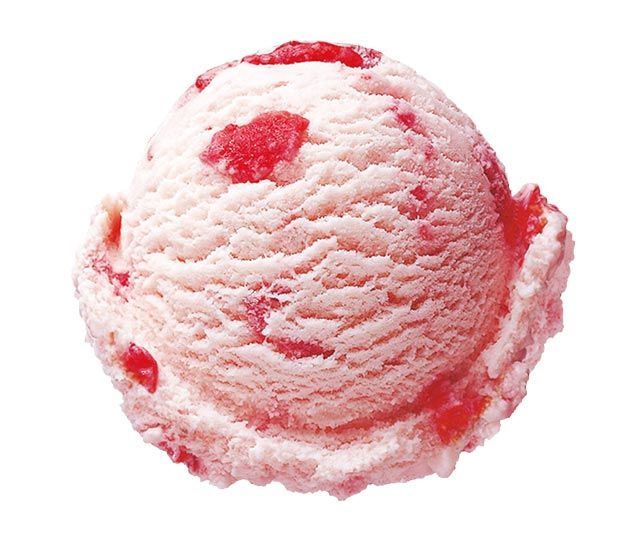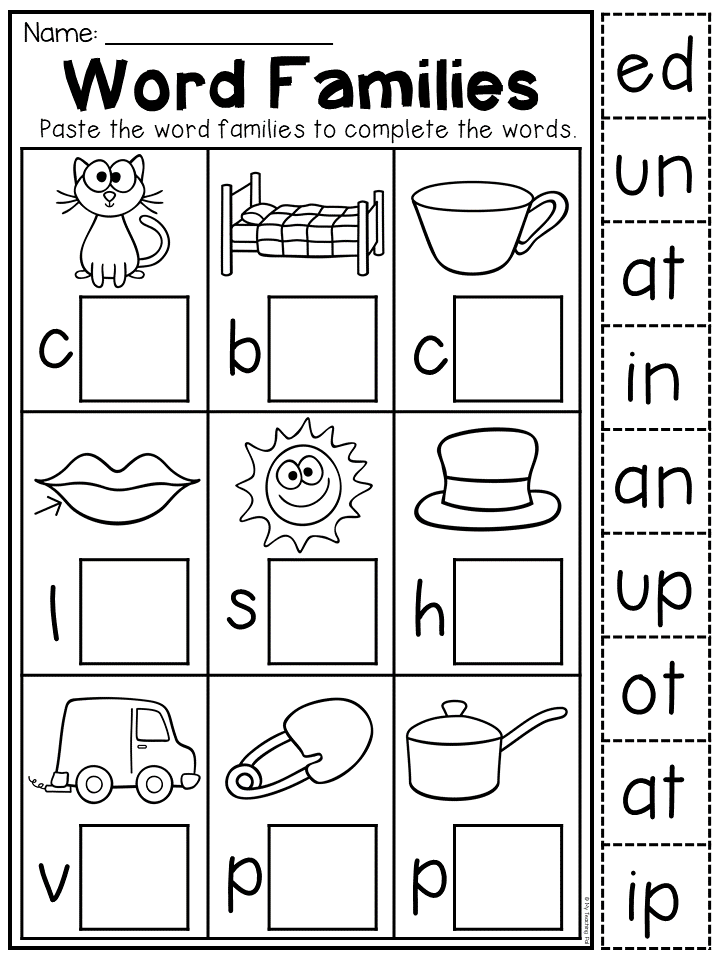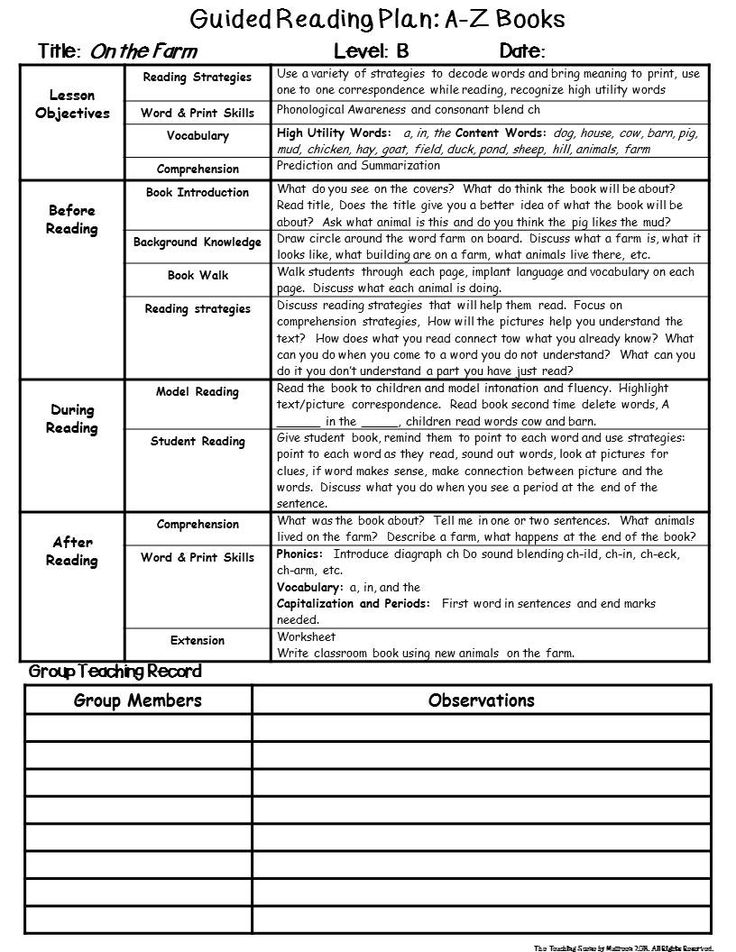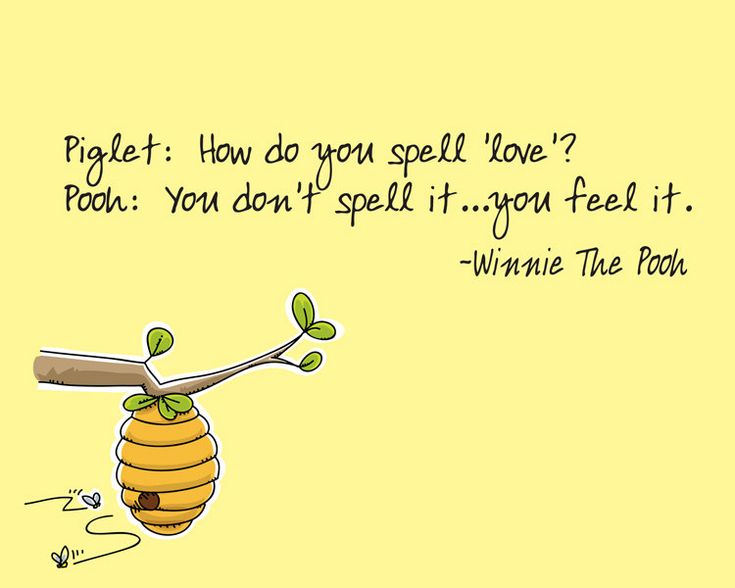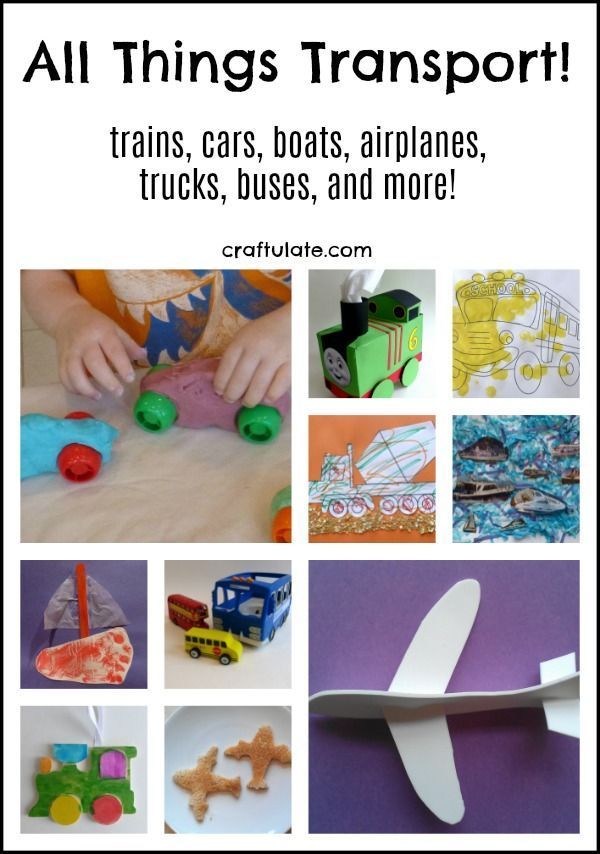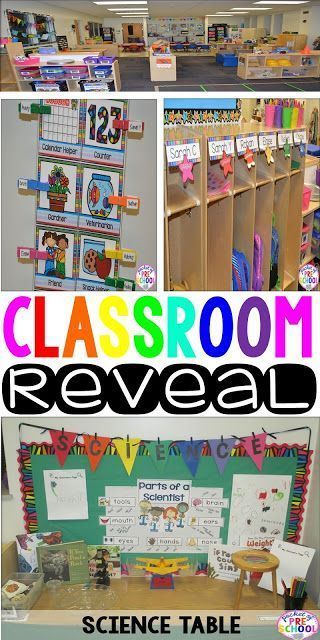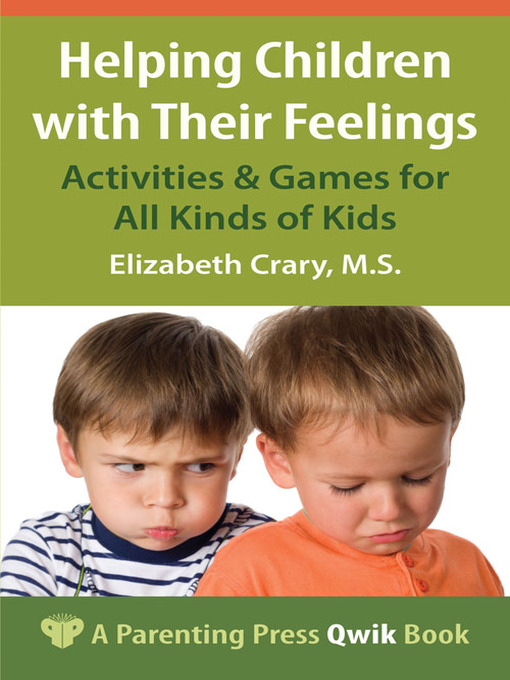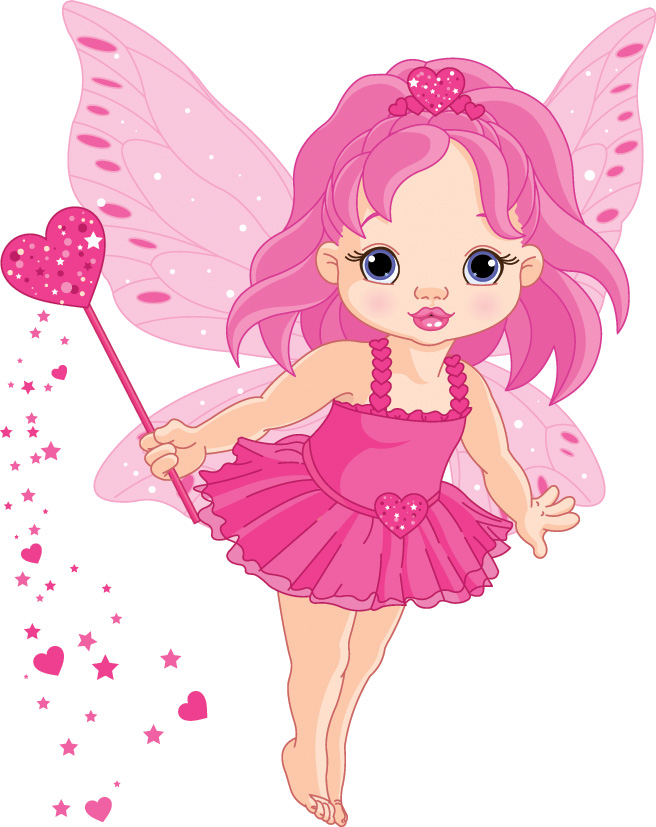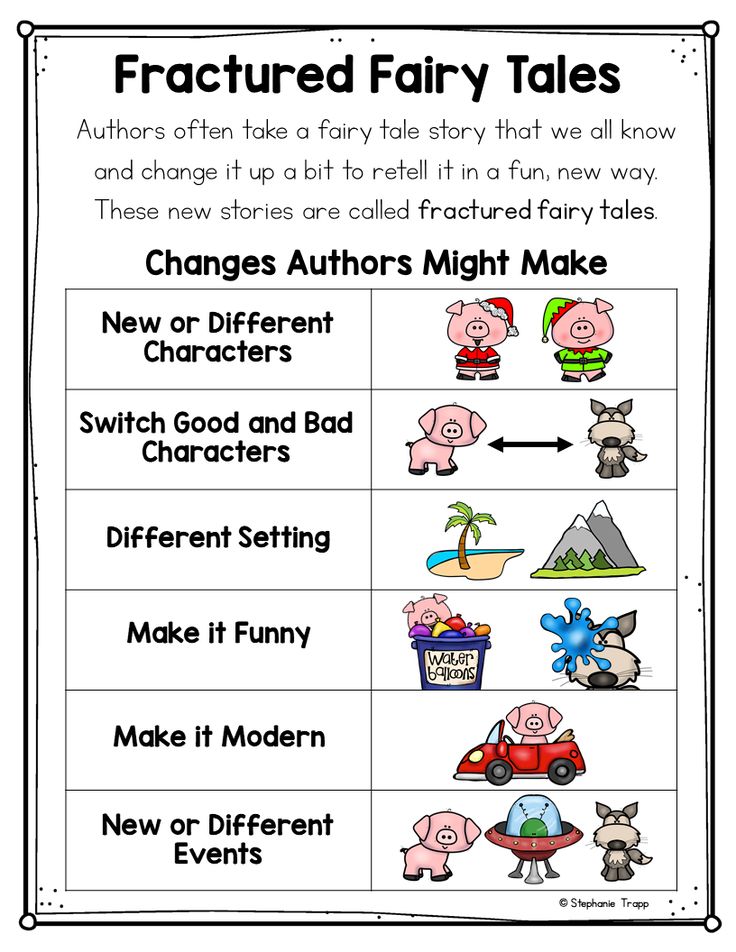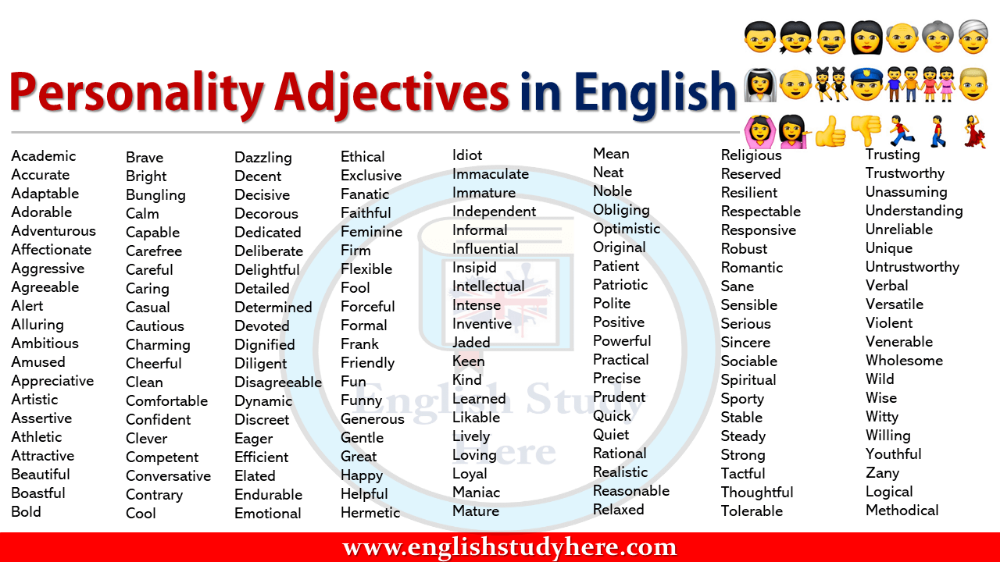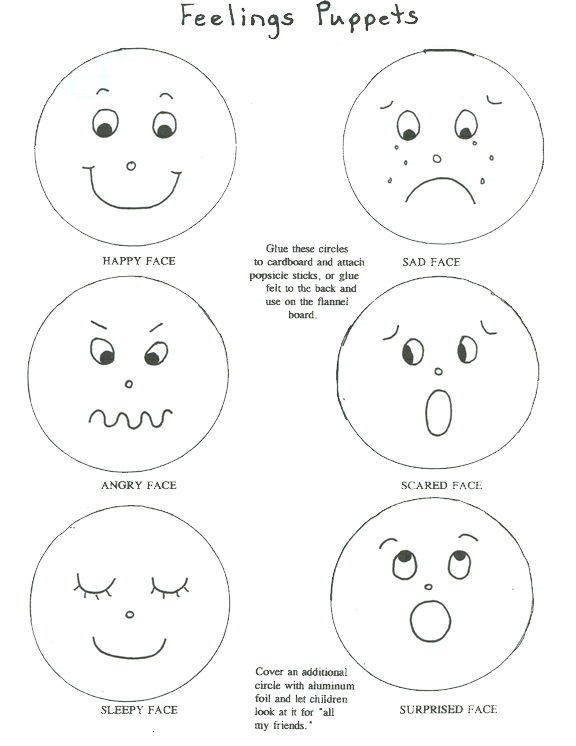Adjectives examples with pictures
Adjectives in English explained in pictures
[“look” is the sense verb for things we can see]Adjectives are the words we use to describe nouns, things like people, animals, plants, objects, places, situations and experiences. They help us add detail to what we are saying by talking about colour, shape, size and other qualities.
For example, adjectives can describe:
Opinions/characteristics:
The clothes are pretty. The shoes are comfortable.
Size:
The bag is big.
Feelings:
The woman is happy.
Temperature:
The weather is hot.
Age:
The woman is young.
Shape:
The earrings are round.
Colour:
The shirt is yellow.
Origin:
The woman is English.
Material:
The trousers are jeans.
Adjectives are usually is placed in front of the noun they describe
We most often place adjectives before the word they are describing, not after. Be careful as this is the opposite structure from many other languages.
For example:
A red car. An old car. A fast car
NOT a car red. A car old. A car fast.
After the verb “to be” and sensing verbs we can use adjectives
Another way we can use adjectives is with the verb “to be” or with verbs that describe the senses, like “to look, taste, sound, feel, smell” or “to seem”. In this structure, we place the adjective after the verb.
For example:
In the picture above the couple at the table use “to be” and many sense verbs to describe their food:
The cake is great. [using “to be”]
It looks delicious. [“look” is the sense verb for things we can see]
It smells wonderful. [“smell” is the sense verb for smells and odours]
It tastes amazing. [“taste” is the sense verb for things we can eat]
It feels soft. [“feel” is the sense verb for things we can touch]
They seem satisfied. [“seem” is the sense verb for things we can guess]
Adjectives do not change their form
In English, adjectives always stay the same even if the number of things we are describing changes. This means adjectives in English are invariable.
This means adjectives in English are invariable.
For example:
One brown dog
Two brown dogs.
Twenty brown dogs.
So no matter the number or quantity, the adjective stays the same.
Use “very” and “really” to emphasise adjectives
We can make adjectives stronger in meaning by using “very/really” in front of them. This emphasises the meaning of the adjective.
For example:
It is hot. >It is very hot.
It is cold. > It is really cold.
Multiple adjectives are put in a specific order
When we want to use more than one adjective, there is a natural order we usually place them in, depending on which quality they describe. The order goes like this:
Quantity, Opinion, Size, Temperature, Age, Shape, Colour, Origin, Material
For example:
[Three] [beautiful,] [small] flowers. [Quantity] [Opinion] [Size]
A [Warm,] [new,] [long] scarf. [Temperature] [Age] [Shape]
[Brown,] [swiss] [chocolate] rabbits.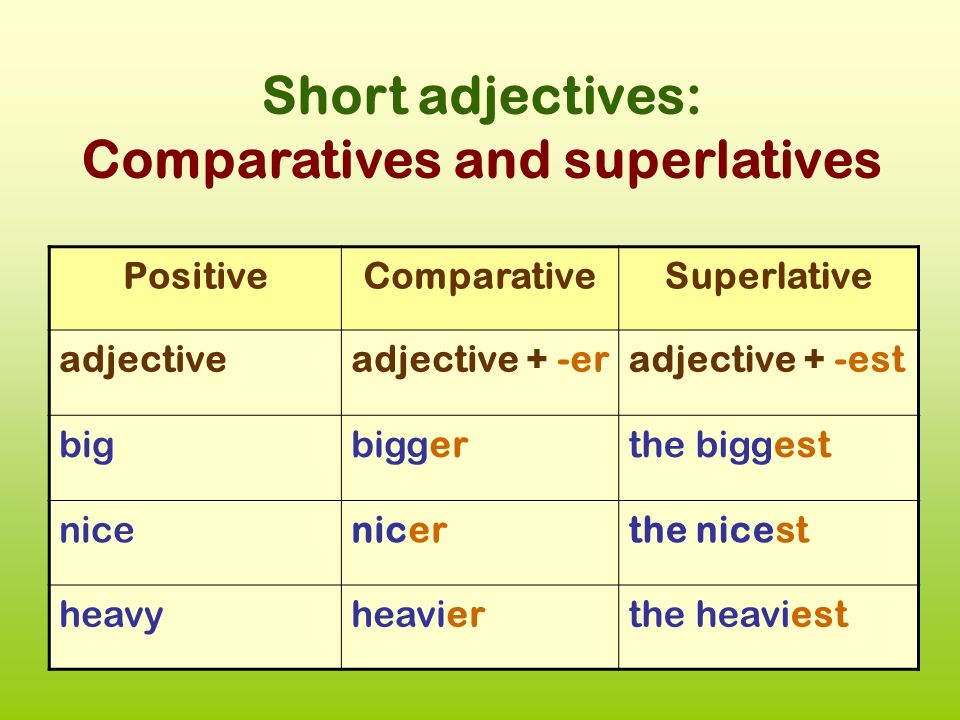 [Colour] [Origin] [Material]
[Colour] [Origin] [Material]
We know that remembering this order can be quite difficult, so you can use a memory trick called a “mnemonic” to help you. Below is an example we thought of, or you have fun making your own mnemonics. The way mnemonics work is that the letters at the start of each word in the mnemonic phrase correspond the first letters of the words you want to remember:
Queen OctoPus SIngs To All Shy Crabs On Mondays =
(Quantity, OPinion, SIze, Temperature, Age, SHape, Colour, Origin, Material)
Summary
Adjectives in English are quite simple to use as don’t change in any way, but remember that they usually go before the word they are describing, and be careful of the word order when you are using lots of adjectives together.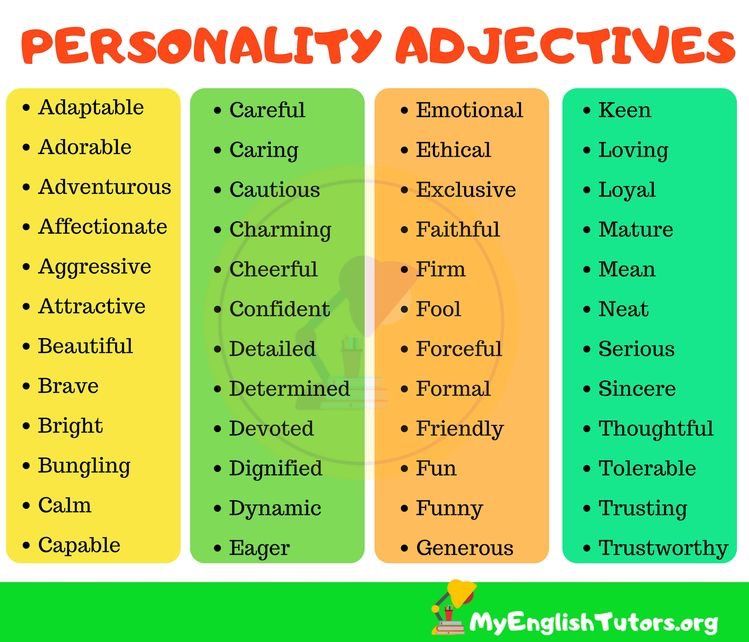 Being able to describe things is a basic part of any language so we see and use adjectives all the time. Check out some of the songs bellow which use lots and lots of adjectives! Can you think of any more? Leave us a comment with your suggestions.
Being able to describe things is a basic part of any language so we see and use adjectives all the time. Check out some of the songs bellow which use lots and lots of adjectives! Can you think of any more? Leave us a comment with your suggestions.
What A Wonderful World – Louis Armstrong
https://www.youtube.com/watch?v=A3yCcXgbKrE
The Logical Song – Supertramp
https://www.youtube.com/watch?v=vD7HJcpJD9U
You Gotta Be – Des’ree
https://www.youtube.com/watch?v=9oZXJD1NVW0
For other examples of grammar explained in pictures, check out our GRAMMAR INDEX here.
Examples of Adjectives and How to Use Them
DESCRIPTION
adjectives definition chart
SOURCE
lemon: anuwat meereewee / Getty , girl/cat: CrazyStripes / Getty , bull horn: vladwel / Getty , bird: Bullet_Chained / Getty , bald man: jemastock / Getty , girl/log: KanKhem / Getty , shoe: deepfuze / Getty , rabbit: johnnylemonseed
PERMISSION
Used under Getty Images license
Where would we be without adjectives? How would we describe a pretty flower or enjoy an enchanting evening? Simply put, adjectives add further description to nouns.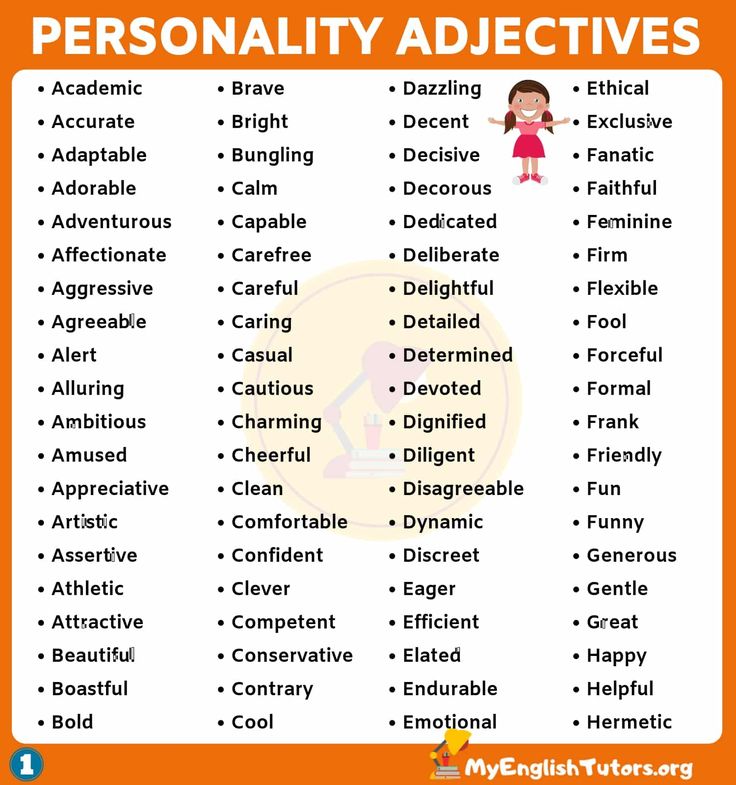 More specifically, they provide flourish to the English language and added a dose of color. When you spend some time examining examples of adjectives, you can electrify your writing with the appropriate injection of adjectival beauty. Ready to have some fun? Dive into a list of adjective examples and how to use them in sentences.
More specifically, they provide flourish to the English language and added a dose of color. When you spend some time examining examples of adjectives, you can electrify your writing with the appropriate injection of adjectival beauty. Ready to have some fun? Dive into a list of adjective examples and how to use them in sentences.
Popular Adjectives Examples
Adjectives describe, identify or further define nouns and pronouns. There are thousands of these descriptive words at your disposal. For ease, they've been broken up into lists of adjectives according to various functions, such as their ability to describe touch, color, shape, and emotion.
Even though these adjective lists are quite extensive, they're merely scratching the surface of the descriptive capabilities of the English language. That's why reading is such a gift. The more you read, the more you add to your vocabulary. In the meantime, explore a large selection to whet your adjectival appetite.
Advertisement
Adjectives To Describe Taste
Did you have a bland bagel? How about a delicious entrée at a restaurant? Well, adjectives are what allow you to describe those wonderful tastes.
| bitter | bland | delicious |
| fruity | gingery | lemon-flavored |
| minty | pickled | salty |
| sour | spicy | sweet |
| tangy | tasty | yummy |
Adjectives To Describe Touch
When it comes to touching something, you can use all kinds of adjectives to describe it. See a list of adjectives to feel your way through this world.
| boiling | breezy | bumpy |
| chilly | cold | cool |
| cuddly | damp | dirty |
| dry | dusty | encrusted |
| filthy | flaky | fluffy |
| freezing | fuzzy | greasy |
| hard | hot | icy |
| loose | melted | painful |
| prickly | rough | shaggy |
| shaky | sharp | silky |
| slick | slimy | slippery |
| smooth | soft | solid |
| sticky | tender | tight |
| uneven | warm | wet |
Advertisement
Adjectives To Describe Sound
Sounds have different volumes. Something can be a whisper or blaring and anything in between.
Something can be a whisper or blaring and anything in between.
| blaring | deafening | faint |
| hoarse | high-pitched | hissing |
| hushed | husky | loud |
| melodic | moaning | muffled |
| mute | noisy | purring |
| quiet | raspy | resonant |
| screeching | shrill | silent |
| soft | squealing | squeaking |
| thundering | voiceless | whispering |
Adjectives To Describe Color
The world is full of a rainbow of color. But if you didn't have adjectives, you wouldn't be able to describe them. Explore several descriptive color adjectives you might use every day to color your world.
| azure | bright | crimson |
| drab | dull | gold |
| indigo | multicolored | mustard |
| pinkish | rosy | scarlet |
| silver | turquoise | violet |
Adjectives To Describe Size
Was that spider gigantic or large? It honestly doesn't matter because you can use whatever adjective you need to describe it best.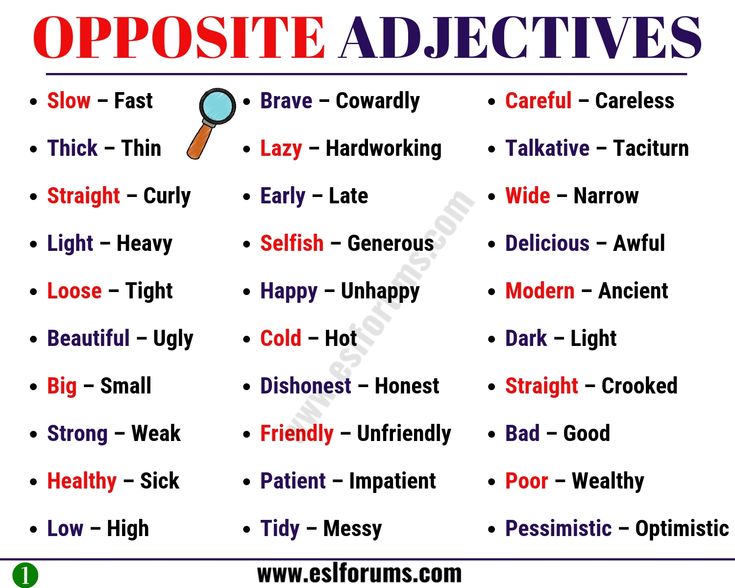
| abundant | big-boned | chubby |
| fat | giant | gigantic |
| great | huge | immense |
| jumbo | large | little |
| long | majestic | mammoth |
| massive | miniature | petite |
| puny | scrawny | short |
| small | tall | teeny |
| thin | tiny | vast |
Advertisement
Adjectives To Describe Shape
You can find a blob on your table or a distorted toy. Adjectives for shapes can come in handy.
| blobby | broad | chubby |
| circular | crooked | curved |
| cylindrical | deep | distorted |
| flat | fluffy | globular |
| hollow | low | narrow |
| oval | rotund | round |
| skinny | square | steep |
| straight | triangular | wide |
Adjectives To Describe Time
How do you describe the passing of time or looking into the past? There are lots of different ways you can talk about time passing due to adjectives.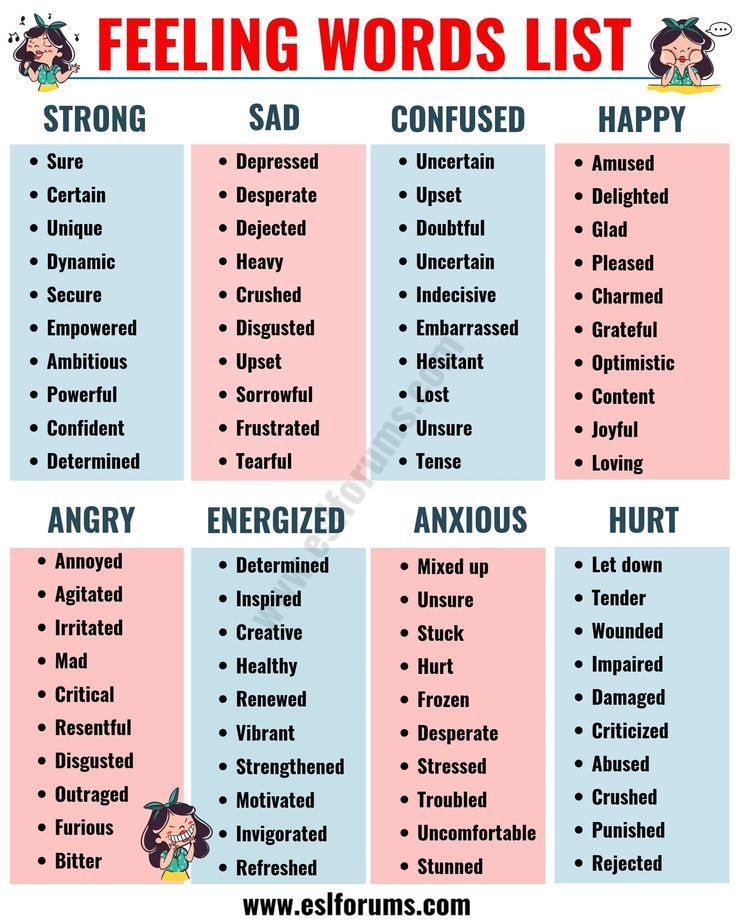
| annual | brief | daily |
| early | eternal | fast |
| first | fleet | future |
| futuristic | historical | irregular |
| late | long | modern |
| old | old-fashioned | quick |
| rapid | regular | short |
| slow | speed | speedy |
| swift | waiting | young |
Adjectives To Describe an Amount
Whether it's an ample or minute amount, you need adjectives to describe it. Spice up your written word through these fun and descriptive adjectives.
| all | ample | astronomical |
| bountiful | considerable | copious |
| countless | each | enough |
| every | few | full |
| heavy | hundreds | large |
| light | limited | little |
| many | measly | mere |
| multiple | myriad | numerous |
| one | paltry | plentiful |
| profuse | several | sizable |
| some | sparse | substantial |
| teeming | ten | very |
Advertisement
Adjectives To Describe an Emotion
The emotions of people are vast.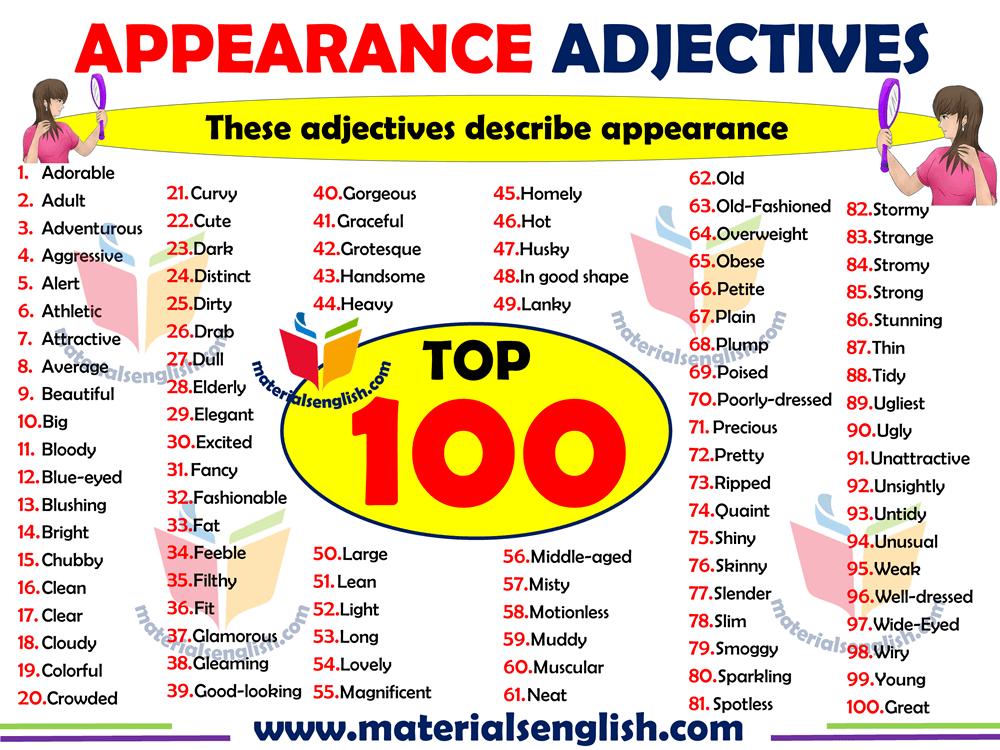 From abrasive to grumpy to lazy, you can a lot of different words that describe how a person feels.
From abrasive to grumpy to lazy, you can a lot of different words that describe how a person feels.
| abrasive | bewildered | combative |
| elated | glib | indignant |
| manic | quirky | rundown |
| tedious | terrible | upset |
| wicked | zany | zealous |
Adjectives To Describe a Person or Personality
Everyone has that famous friend or a restless family member. Imagine how you would describe those around you without adjectives. Thankfully you don't have to. Just to make your life easier, check out this list of descriptive words for personalities or people.
| ambidextrous | breathless | diligent |
| erratic | exuberant | functional |
| gabby | inquisitive | jaunty |
| ritzy | tawdry | verdant |
| vivacious | wandering | weird |
Advertisement
Adjectives To Describe Appearance
A novel or letter wouldn't even hold weight if you couldn't use words like quirky and dull to paint a verbal picture of your characters.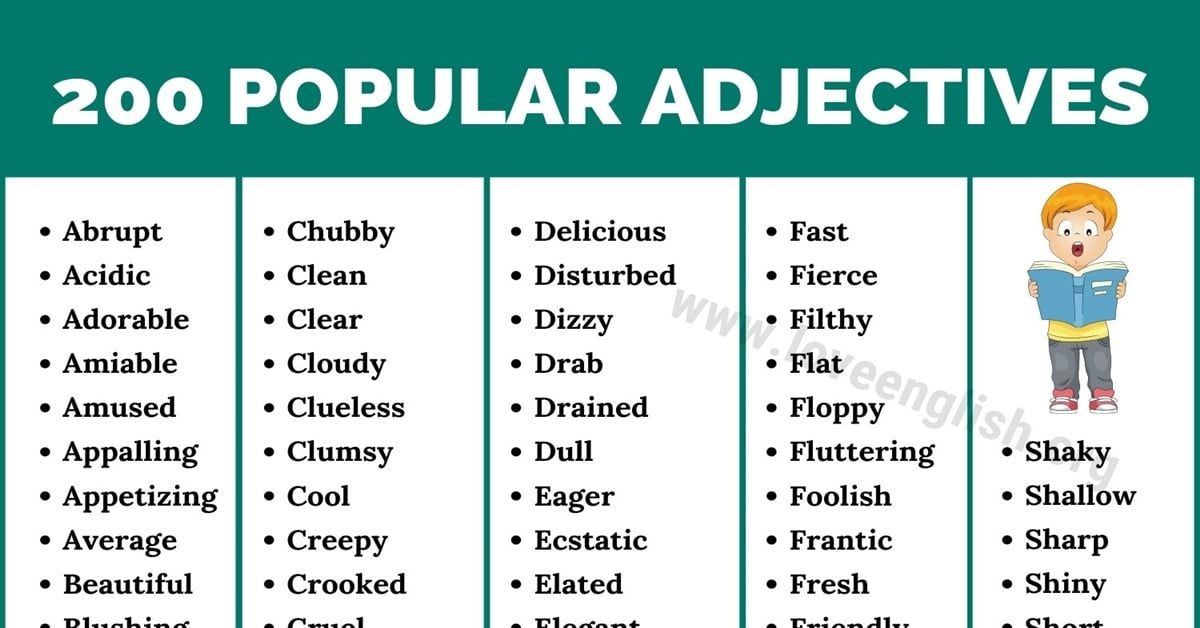 Explore words that describe a person's appearance.
Explore words that describe a person's appearance.
| alluring | cracked | drab |
| debonair | gleaming | interior |
| murky | poised | sparkling |
| unbecoming | watery | wiry |
| wooden | worried | zaftig |
Adjectives To Describe Situations
Jazz up your discussion of situations with some descriptive adjectives. These words make a plot so much better!
| accidental | achievable | advantageous |
| alcoholic | animated | aquatic |
| aromatic | aspiring | bad |
| bawdy | biographical | bizarre |
| broken | careful | credible |
| creepy | cumbersome | disastrous |
| dismissive | doubtful | elementary |
| finger-printed | groundless | hard |
| harmful | high | honest |
| horrible | illegal | illegible |
| imperfect | internal | inventive |
| jazzy | juvenile | legal |
| logical | main | minor |
| nasty | nutritious | obsolete |
| optimal | organic | premium |
| quizzical | rainy | redundant |
| remarkable | simple | tricky |
| wholesale | wry | x-rated |
Advertisement
Printable List of Adjectives
Since there are so many different adjectives, check out a printable list to inspire you.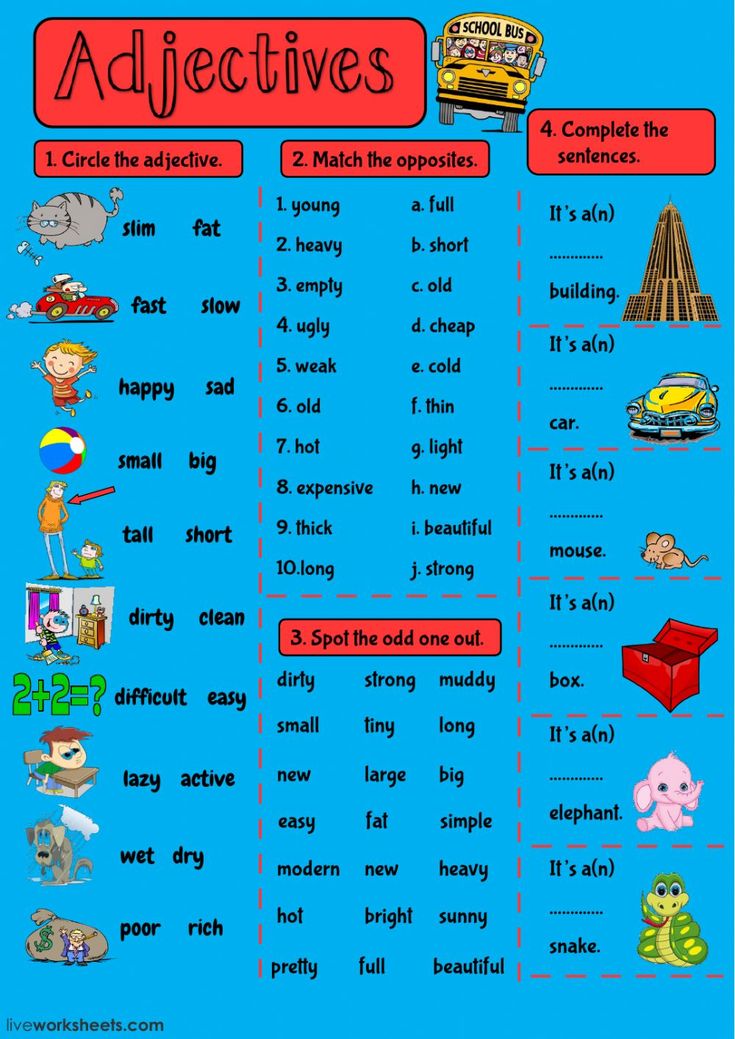
List 228 Common Adjectives
Click to View & DownloadHow to Use Adjectives
Adjectives are used within sentences to modify nouns. So they might tell you what something looks like "beautiful hat" or the number of something "ten flowers." Adjectives are handy within sentences because they provide readers more information. Additionally, adjectives are found with the noun they are modifying. To understand how an adjective is used within a sentence, check out a few example sentences with adjectives.
- We watched the scariest movie yesterday.
- He had a blue bike in his yard.
- He was carrying four flowers.
- The mean dog growled at the mailman.
- I have a messy desk.
Additionally, you can use adjectives to complement a linking verb called a predicate adjective.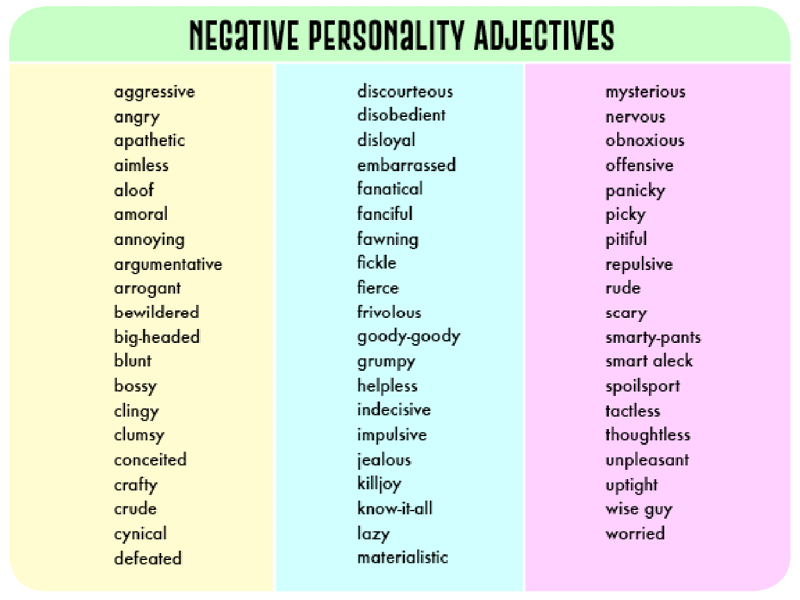 So the adjective might provide more about how something is feeling.
So the adjective might provide more about how something is feeling.
- My brother is sad.
- It looks messy in the living room.
- Walking is slower than skating.
- My dog is excited.
Advertisement
Mind Your Love for Adjectives
Now that we've seen a nice sampling of adjectives, there's one thing left to note. It's best to use discretion with adjectives. You never want to overdo it. Generally, nouns and verbs should do most of the descriptive work in your writing. Don't simply tell your reader something is beautiful, exciting or interesting. Use your words to set a detailed scene and consider using a sprinkling of adjectives rather than a heavy dousing.
As you seek to strike that balance, expand your adjectival toolbox a little further with this list of positive adjectives. Having a wide variety of options at your disposal will allow you to choose the right adjective at the right time.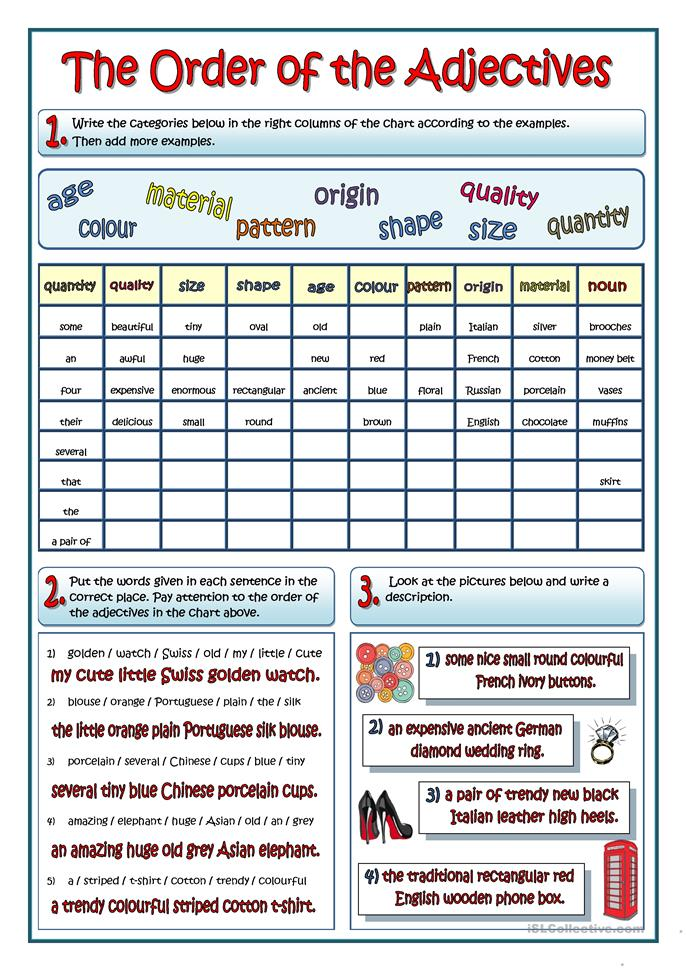
Adjective in Russian: ranks, degrees, forms.
Author:
Newton
03 June 2019 12:38
Tags: Grade 2 Grade 3. knowledge adjective Russian language parts of speech
Subject: adjective. Russian language. 2nd grade, 3rd grade. What is an adjective? Lesson about adjectives: parts of speech, the essence of the concept of "adjective". Adjective questions. Degrees of adjectives. Adjective forms. Endings, suffixes of adjectives. Short form of an adjective.
Source:
An adjective in Russian is an independent part of speech denoting a sign of an object, living being or phenomenon. The adjective answers the questions what? which? which? which? whose? whose? whose? whose?
Adjectives.
Examples
Good character.
Beautiful girl.
Short dress.
Big changes.
Important! The sign of action is not an adjective, but an adverb.
Read about other parts of speech in Russian
A noun denotes an object.
An adjective is a sign of an object.
The pronoun indicates the subject.
The verb denotes an action.
Adverb - a sign of action
Interjection conveys an exclamation, sound, emotion.
Classes of adjectives. Qualitative, relative and possessive adjectives
Adjectives are divided into three categories: qualitative, relative and possessive.
Qualitative adjectives denote a feature that may be manifested to a greater or lesser extent. For example, warm - you can be warmer and less warm. Warm is a quality adjective.
Examples of quality adjectives
Smart person
Slow train
Interesting book
Big tree
Cold morning
Relative adjectives name fixed qualities, expressing them through relation to other objects.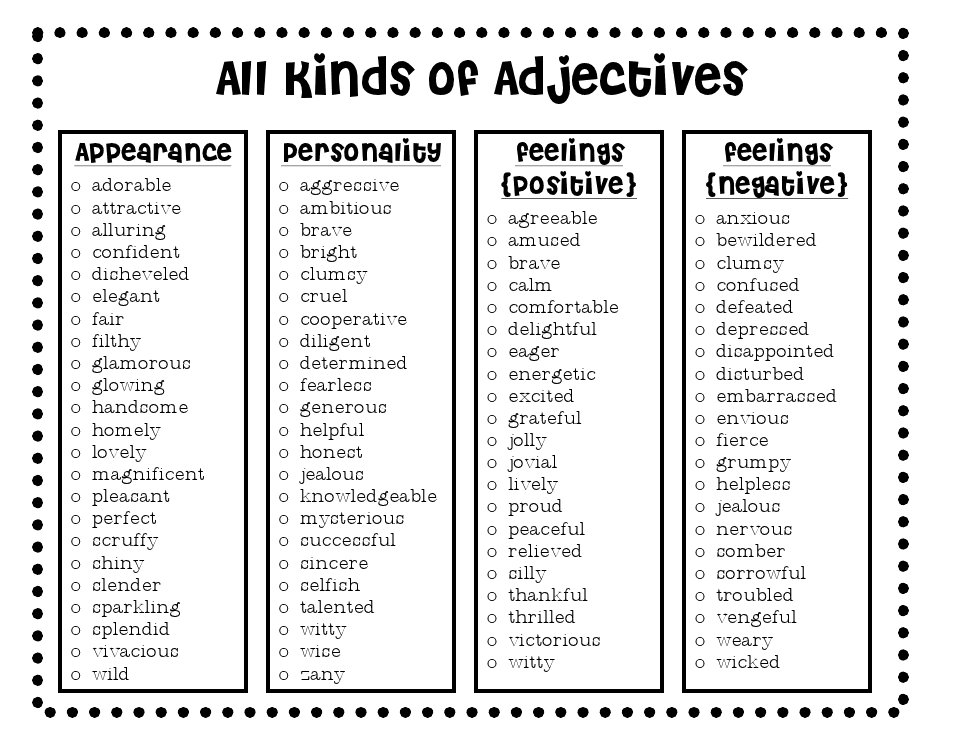 For example, steel means made of steel. Steel is a relative adjective.
For example, steel means made of steel. Steel is a relative adjective.
Examples of relative adjectives
Gold chain (gold chain)
Night walk (night walk)
Bottom row (bottom row)
Two-year-old girl (two-year-old girl)
Cavalry gait (trooper gait)
Relative adjectives are sometimes used in a figurative sense and then acquire the meaning of qualitative features. Such relative adjectives pass into the category of qualitative ones. For example, iron health (synonymous with good health) or golden hands (skillful hands).
Possessive adjectives indicate that an object belongs to someone and answer the question whose?
Possessive adjectives are formed with the help of suffixes: -in-/-yn, -ov-/-ev, -й/-й.
Examples of possessive adjectives
Grandfather's clock (grandfather's clock)
Vasya's smile (Vasya's smile)
Crocodile tears (tears of a crocodile)
Tsaritsyn meadow (the queen's meadow)
kind - kind; evil - angry.

Most quality adjectives have two forms:
smart - clever
far - far
short - short
cheerful - cheerful
Depending on the hard or soft stem, adjectives in the masculine gender end in -oy or -y/-y (crazy, green, soft), in the feminine - in -aya/-yaya (large, ancient), neuter - on -th / -her (big, powerful).
The syntactic role of an adjective in a sentence
In a sentence, an adjective is most often a definition, it denotes a feature or quality of an object, person, phenomenon, but it can also be a predicate.
Full form adjectives agree with the noun they define in number, gender and case - they act as an agreed definition:
I read an interesting book.
The shaggy dog ran up to the boy.
The dark forest was lost in the evening mist.
The adjective can also be part of a compound nominal predicate:
The child was cheerful and talkative.
He became educated and cultured.
I was annoyed.
An adjective in the short or comparative form is a predicate:
She is rich and successful.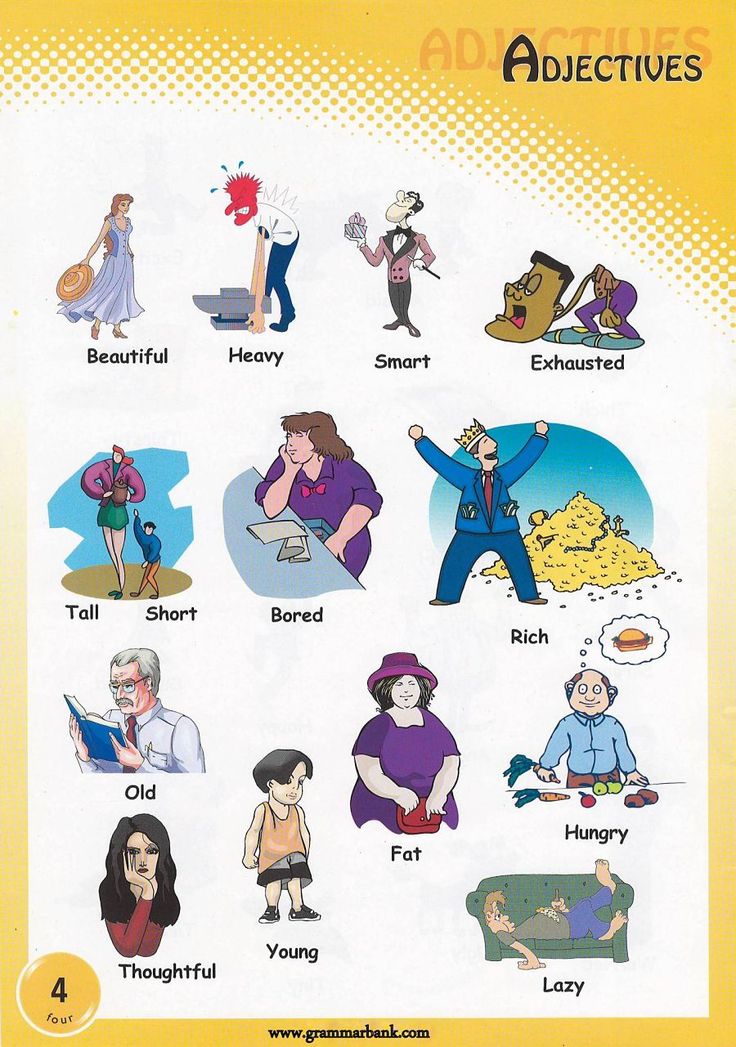
This morning I am cheerful.
You are smarter than me.
Case of adjectives. Declension of adjectives. Three types of declension
In Russian adjectives change by gender, case and number. An adjective has the same case, gender, and number as the noun it refers to. This is called negotiation:
Good person. Good man. Good person.
Nice car. Good car. Good car.
Good mood. Have a good mood. Good mood.
Good people. Good people. Good people.
Declension changes the endings of adjectives.
| | Male genus | Women | 137 |
| Nominative | big green garden | favorite blue hat which one? | wide green field what? |
| Genitive | big green garden | favorite blue hat | wide green field |
| Dative | what kind of big green garden? | favorite blue hat | wide green field |
| accusative | big green garden | favorite blue hat | wide green field |
| Creative | big green garden | favorite blue hat | wide green field |
| Prepositional | about a large green garden | about your favorite blue hat | about a wide green field |
There are three types of adjective declension.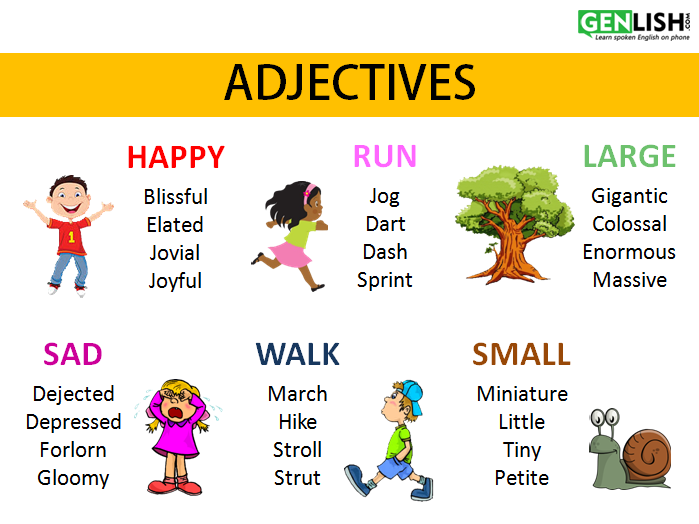
Adjectival type - qualitative and relative adjectives in full form are declined according to it. For example, green, kind.
Pronominal type - possessive adjectives decline according to it. For example, mother, fox.
Zero declension - it includes adjectives that do not change, remain the same in all forms. For example, khaki, indigo, mini.
Degrees of comparison of adjectives: relative and superlative
Qualitative adjectives form degrees of comparison: comparative (more, less) and superlative (largest, smallest).
Comparative degree means that a feature is stronger or weaker than another subject.
For example: The first one was stronger. The second one was less powerful.
The comparative degree can be simple and compound. The simple form of the comparative degree is formed using the suffixes -she, -che, -e, -ee, -ey:
weak - weaker
sad - sadder
The compound form of the comparative degree is formed with the participation of the words "more", "less" and the initial form of the adjective:
interesting - more interesting
light - less light
The superlative degree indicates that the feature is manifested to the greatest extent than in other objects. The superlative form is also simple and compound.
The superlative form is also simple and compound.
A simple form is formed using the suffixes -eysh-, -aysh-.
beautiful - the most beautiful
close - the closest
Compound superlative form can be formed in two ways:
simple - least simple
Add to the simple comparative degree of the word "total" or "all" strong - stronger than all
simple - easiest
Read more: Degrees of comparison of adjectives in Russian. Rules and mistakes
Morphological analysis of adjectives
Morphological analysis of adjectives takes place according to the following plan:
I. Constant features
Rank by value (qualitative, relative or possessive)
Degrees of comparison (for qualitative adjectives)
Full or short form
II. Non-permanent signs
number
gender
case
Morphological analysis of the adjective. Example
There were two houses on a distant street.
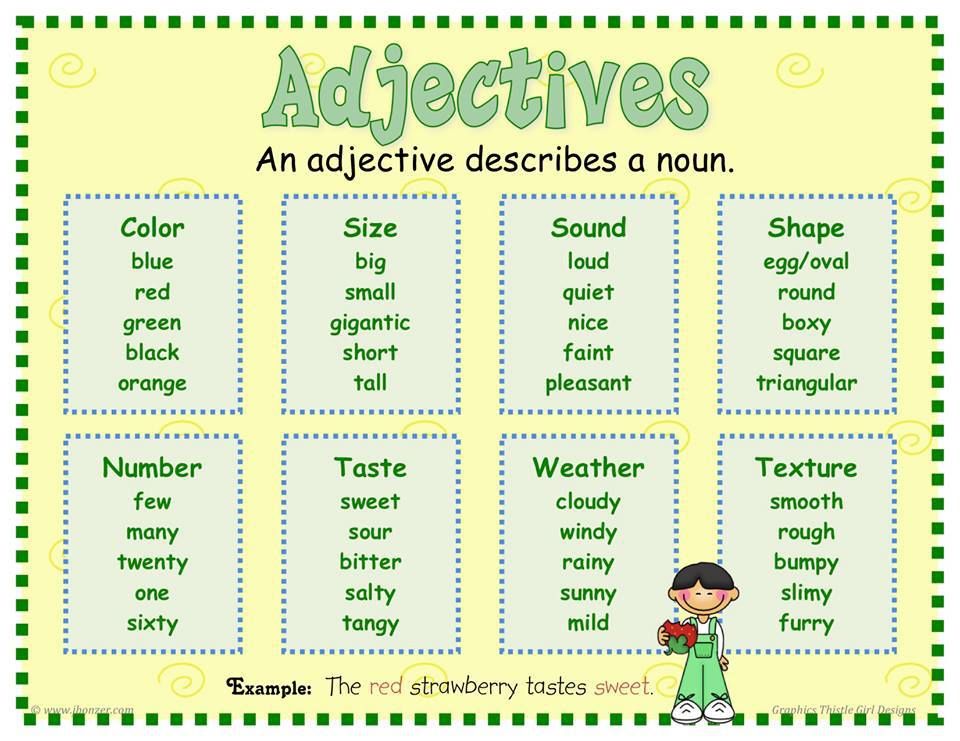
On the distant - an adjective, denotes a feature of the object: (on which?) distant, the initial form is (what?) distant.
Permanent morphological features: qualitative
Non-permanent morphological features: used in the full form, in the prepositional case, in the singular, in the feminine.
Syntactic role - in a sentence is a definition. On the street (what?) Far away.
Written morphological analysis of the adjective
On the street (what?) distant
n.f. - distant
Post. signs: quality
signs: full form, Pr.p., singular, f.p.
on the street (what?) Distant - definition.
See also: Spelling NOT with adjectives. Merged or separate?
Tags: 2nd grade 3rd grade. knowledge adjective Russian language parts of speech
Ranks of adjectives by meaning. Qualitative adjectives
Outline of the lesson of the Russian language in grade 6
_____________________
Topic : Discharges of adjectives by meaning.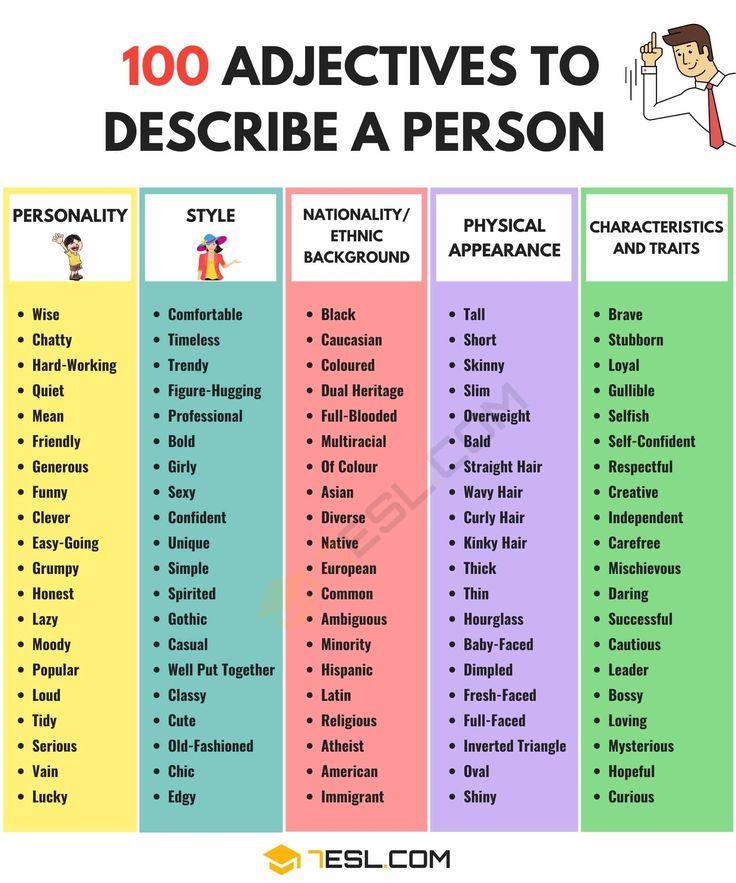 Qualitative adjectives
Qualitative adjectives
Purpose and objectives:
- give an initial idea of the categories of adjectives and the distinguishing features of each category;
- learn to determine the ranks of adjectives by meaning, as well as develop the skill of finding quality adjectives in texts, knowing their distinctive features;
- to form the ability to distinguish adjectives from other parts of speech, to determine the main grammatical features of an adjective, to develop logical thinking, to expand the vocabulary of schoolchildren through the use of adjectives in speech, the ability to work independently;
- promote a sense of friendship, mutual understanding, respect for each other, responsibility for the work done.
Lesson type: combined
Equipment : handout, records on the board, pictures with items
Lesson Course
1.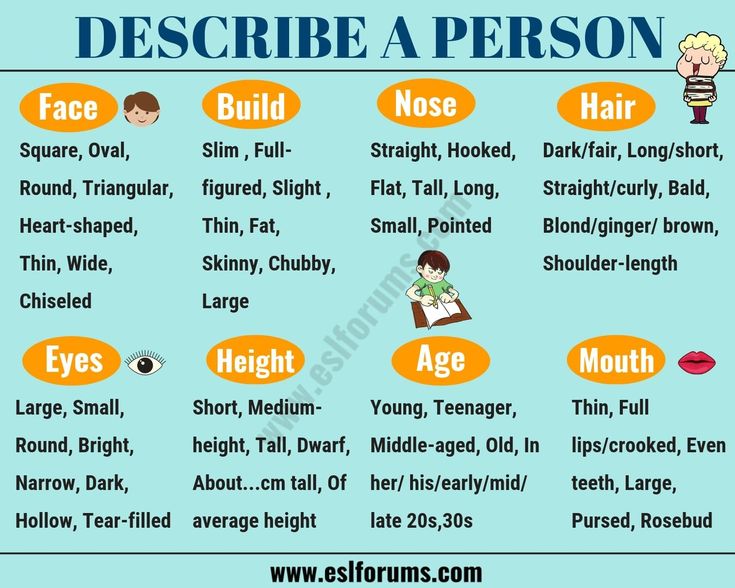 Organizational moment 9000 9000
Organizational moment 9000 9000
2. Motivation to work as a single team, which will be called "Smile". Let's read the motto of our lesson in chorus:
We are funny guys
And we don't like to be bored.
We go to our native school,
To gain knowledge.
- I hope that the next lesson will not be in vain for you and me, and you will leave it having gained new knowledge for yourself.
3. Reporting the topic of the lesson, setting goals, tasks
- Today we will continue to work on the adjective. You will learn something completely new from the life of adjectives. But more on that later.
4. Checking homework
- First I would like to check how you repeated the material about the adjective. You take out a sheet with a question and immediately answer it with a full answer.
- Is the adjective an independent or auxiliary part of speech?
- What questions does the adjective answer?
- What does the adjective mean?
- How do adjectives change? (by gender, number, case)
- Can adjectives have a full and short form? Give an example.
- What is the syntactic role of the adjective?
- Give examples of adjectives. Define the genus. How did you do that? (either by question or by ending)
- Can adjectives become nouns?
- So, what is an adjective?
5. Learning new material
1) Working with pictures
- Guys, look at these objects. Choose such adjectives for them so that they talk about what object, what it is made of and to whom it belongs.
For example: soft toy
hat
chair
There are many more of them than we have given in the examples.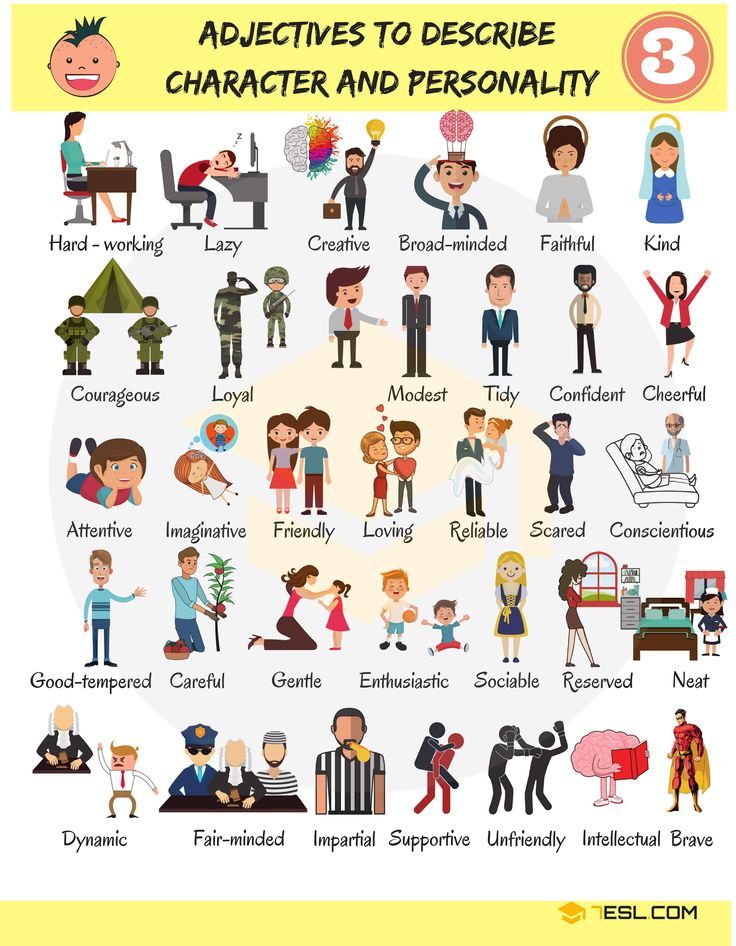 Some can be seen, others can be felt, others can be felt, etc. So, by meaning, adjectives are divided into three categories: qualitative, relative, possessive.
Some can be seen, others can be felt, others can be felt, etc. So, by meaning, adjectives are divided into three categories: qualitative, relative, possessive.
3) Working with study material
- Now each of you will independently study the signs of one of the categories, and then introduce other students to this group of adjectives and tell how to determine this category of adjective.
(Students use the textbook material paragraph 44)
6. Consolidation of the studied
1) GAME "Gift"
- And now I want to offer you the game "Gift". I will name the subject, and you must describe it, using qualitative, relative and possessive adjectives for this, form a possessive adjective on your own behalf, for example, a diary - beautiful, school, Vasin.
(Objects: pen, pencil, eraser, ruler, notebook)
2) Magic Tree GAME
- An unusual tree with colorful fruits has grown in an unusual garden.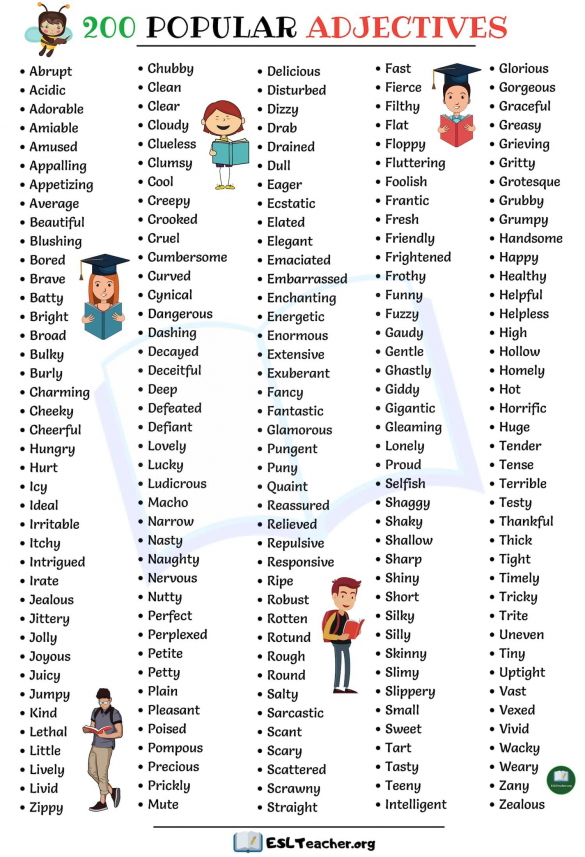 It's time to harvest. Your task is to arrange the crop into baskets.
It's time to harvest. Your task is to arrange the crop into baskets.
(three baskets are prepared with the letters K - qualitative, O - relative, P - possessive). To do this, you need (one person after another to go out) to pick the fruit, turn it over, read the adjective written on it, determine the category of the adjective by value and put it in the appropriate basket.
- We will talk about relative and possessive adjectives in detail in the next lessons. And today we will focus on quality adjectives.
-
Physical education
- And now let's have a little rest. Inhale deeply and exhale several times: inhale - exhale, inhale - exhale and again - inhale - exhale. Give your neighbor on the right a big smile, and now your neighbor on the left. Wrinkle your forehead - be surprised, frown your eyebrows - get angry, wrinkle your nose - you don’t like something, relax your facial muscles, your face is calm.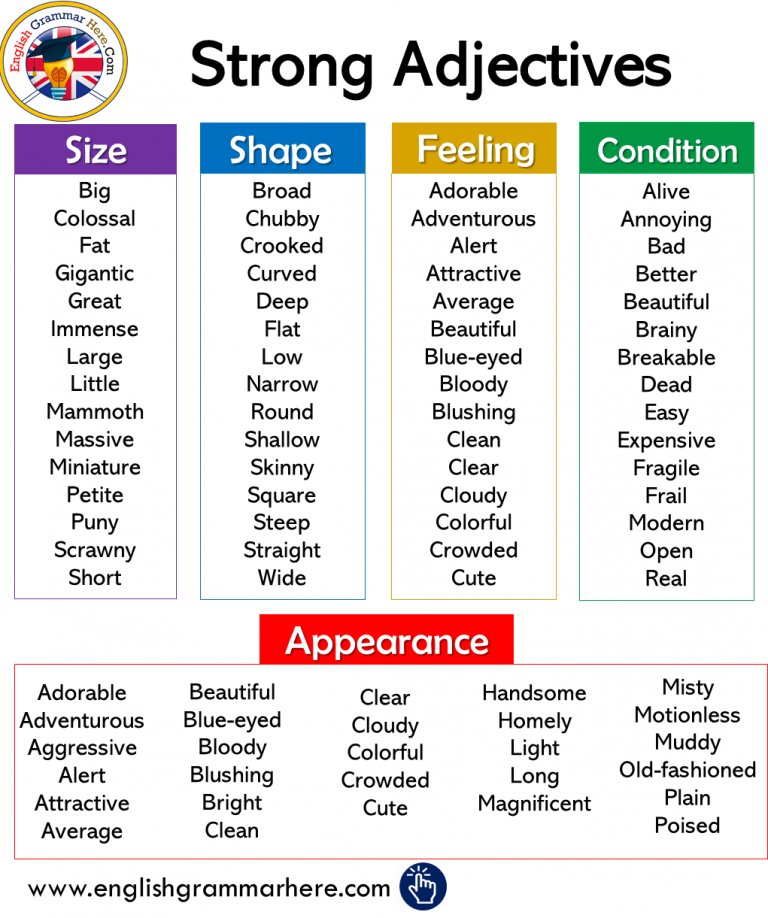 Raise and lower your shoulders: inhale - exhale, inhale - exhale. Well done. Now smile at me - the lesson continues.
Raise and lower your shoulders: inhale - exhale, inhale - exhale. Well done. Now smile at me - the lesson continues.
- So what adjectives are we going to talk about? Correctly, let's repeat once again what quality adjectives mean, what qualities of an object are called.
- SIZE
- COLOR
- INTERNAL QUALITIES
- AGE
- WEIGHT
- In addition, quality adjectives have long and short forms. Adjectives in short form change by gender and number and act as a predicate. (students read the material in the textbook on their own)
- Tell me, how else can you determine that an adjective is qualitative? (If a short form can be formed from this adjective, then it is a qualitative adjective)
- Give examples. (beautiful - beautiful, sweet - sweet, old - old, huge - huge)
- Now let's do exercise 325 (the second sentence all together, then on our own)
Calm river. - The river is calm.
- The river is calm.
Old barge. - The barge is old.
Narrow river. - The river is narrow.
Sad shores. - The shores are gloomy.
Fast river. - The river is fast.
Wide space. - The space is wide.
Deep water. - The water is deep.
Thoughtful firs. - Ate thoughtful.
Thin birches. - Thin birches.
Black mirror. - The mirror is black.
- What signs are called qualitative adjectives in this text? (item quality, color, age, size)
- Next exercise 326 (selective writing)
Beautiful - beautiful, kind - kind, distant - far, close - close, fresh - fresh, spacious - spacious, wide - wide.
(immediately explain why they will not write out this or that adjective)
- What category do these adjectives belong to?
- What is their role in the supply?
- And now you will be trackers.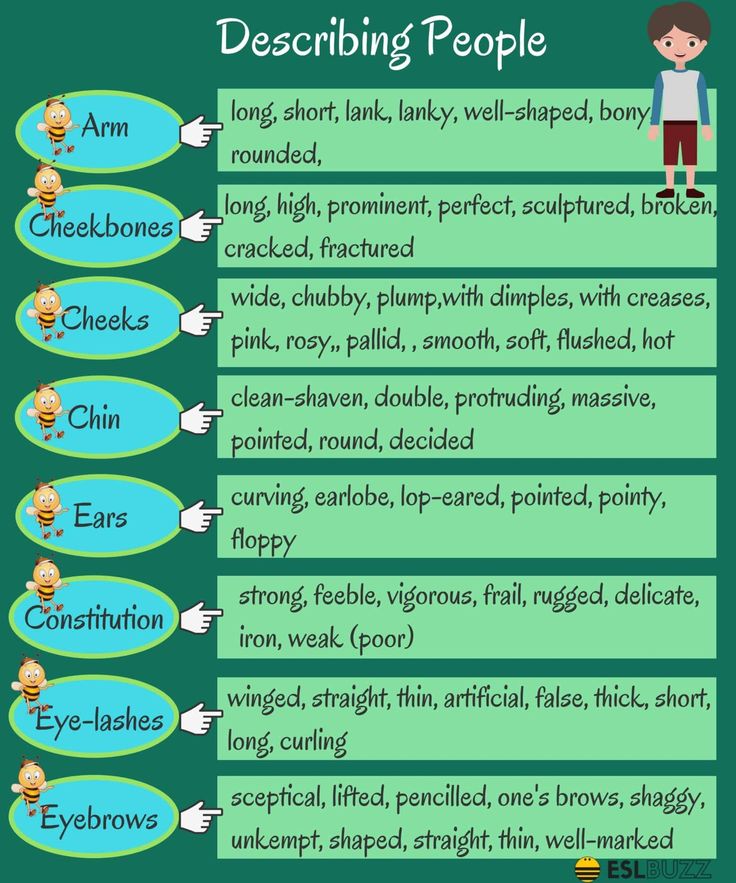 Ex. 327 ("Pathfinder")
Ex. 327 ("Pathfinder")
(Perform independently. The first option is 2-4, the second option is 5-6 sentences.)
- The next task is "Visiting Proverbs". Invites you to continue the proverb you have begun by inserting short adjectives. But you will not only insert short adjectives, but also determine their gender and number.
He who is neat is pleasant. The chatter is both beautiful and colorful, but empty.
The enemy is strong, but our people are steadfast. Who is stingy and greedy, he is not good in friendship.
He who is not afraid of words is not afraid of the whip. Explain the meaning of the first and third proverbs.
- Tell me, if short adjectives were in the plural, could you determine the gender? (No, why? (Because it is a non-permanent sign.)
- Ex. 329. Spelling problem "Write according to the rules"
- But first, you will study the table yourself in the textbook
- So, how to write short forms of adjectives with stems in sibilant? Good!
- But you also remembered the rule for spelling nouns with a hiss at the end.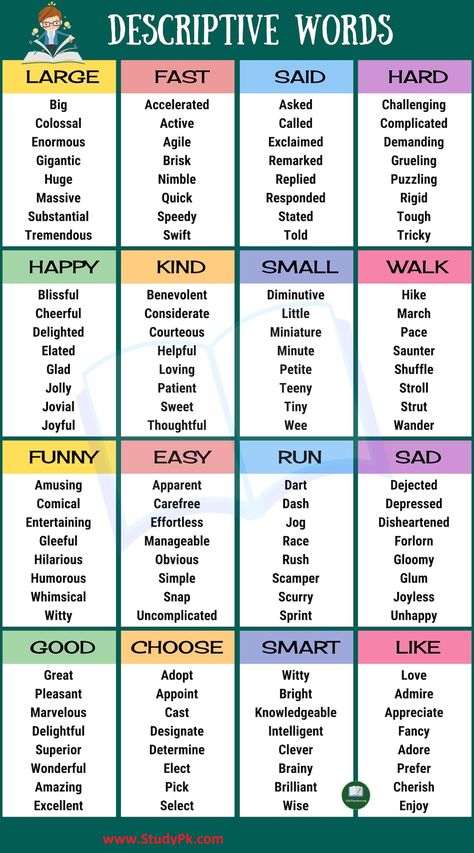 How to write feminine nouns 3 cl. with a sizzle at the end? And how are nouns 1 and 2 cl. m.r. with a sizzle at the end? How are nouns plural written? h. with hissing at the end? Give examples. (sword, groves, dachas, kalach, cloak, candles).
How to write feminine nouns 3 cl. with a sizzle at the end? And how are nouns 1 and 2 cl. m.r. with a sizzle at the end? How are nouns plural written? h. with hissing at the end? Give examples. (sword, groves, dachas, kalach, cloak, candles).
- And now let's start the exercise. You must form short forms of adjectives, highlight the ending for full adjectives, and underline the sizzling for short ones.
- Oral work. I say the word, and you, if it's a short adjective, clap your hands.
Prickly, key, groves, roofs, fresh, burning, thing, speech, dry land, hot, reckless, similar, mighty, pear.
- How would you write these adjectives: with or without a soft sign?
7. Summing up the lesson
- So, what new knowledge did you get at the lesson? What adjectives did you learn in class?
- What do qualitative adjectives mean? What two forms do they have? How do you write short quality adjectives with a sizzle at the end?
- What can you say about relative and possessive adjectives?
8.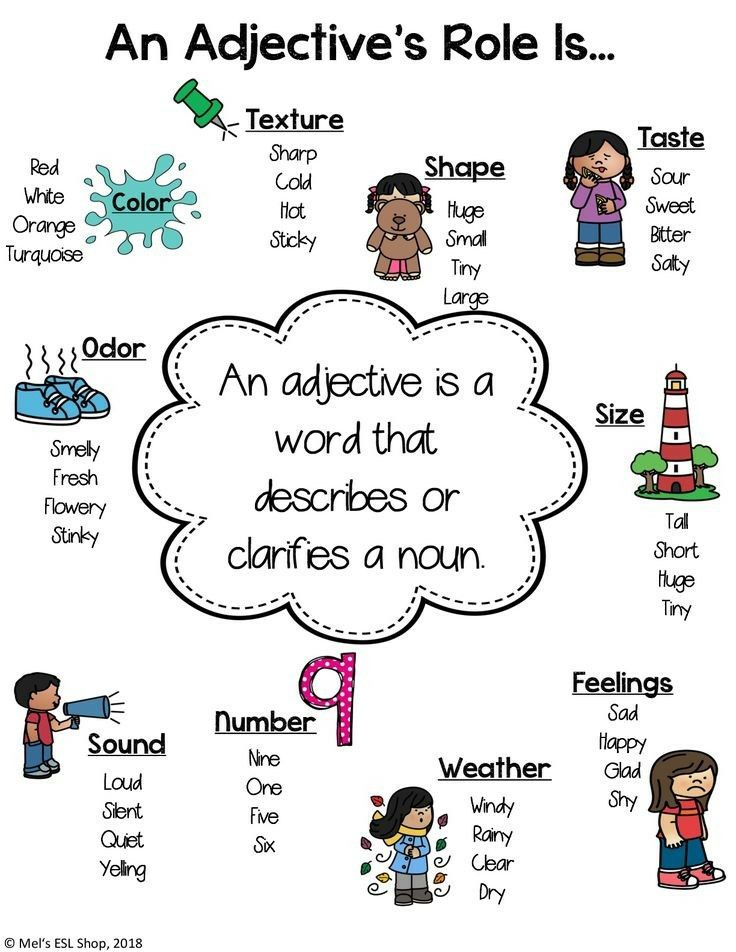
Learn more

